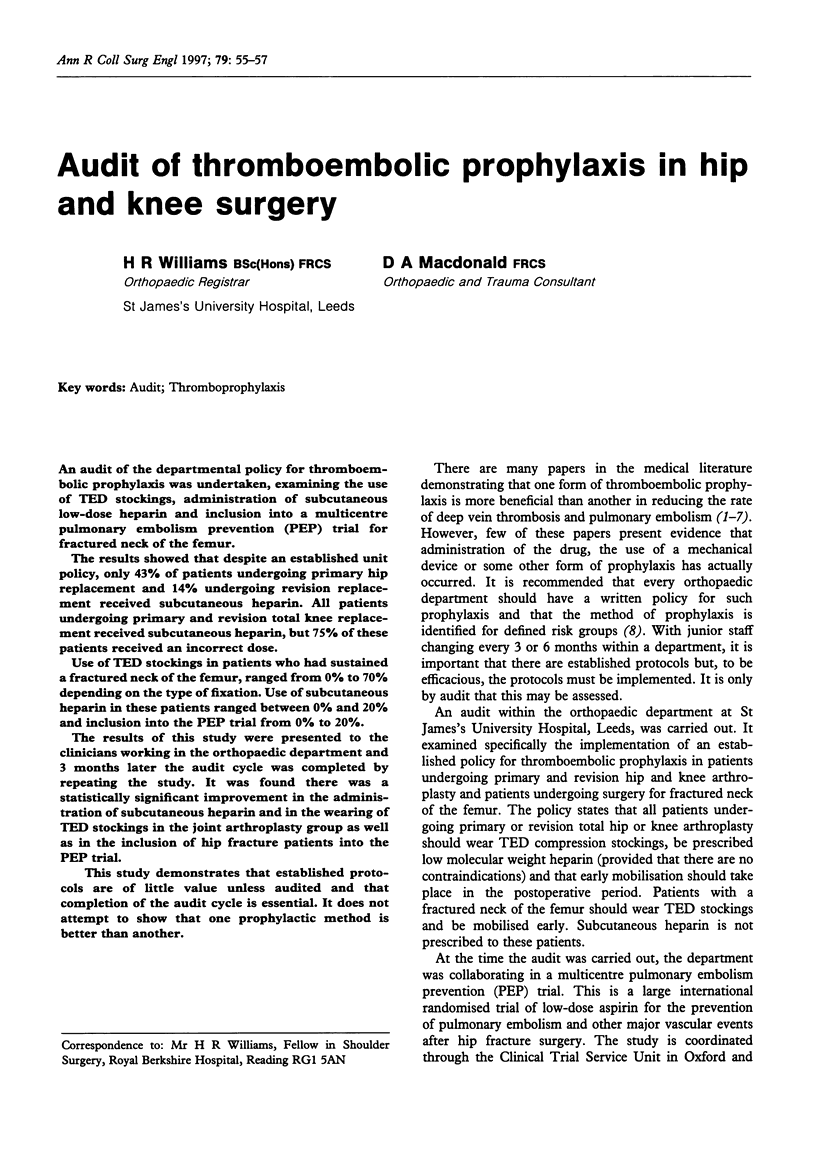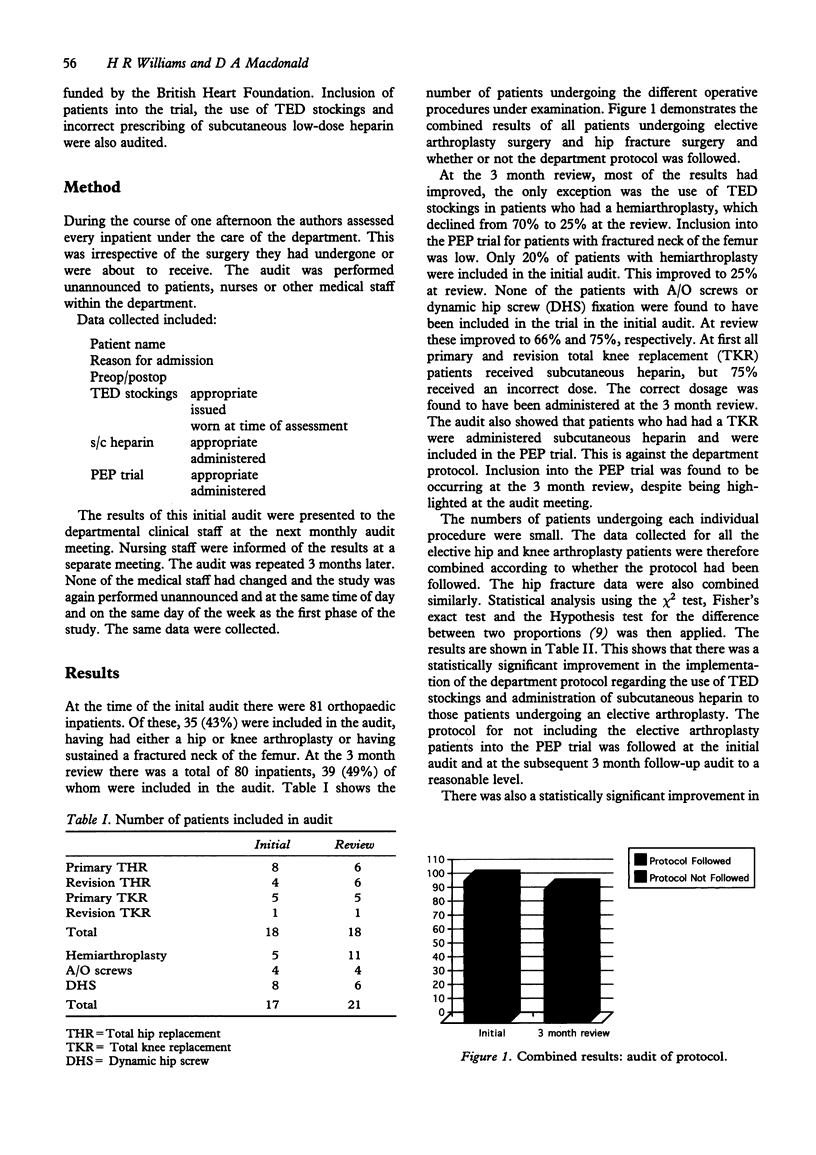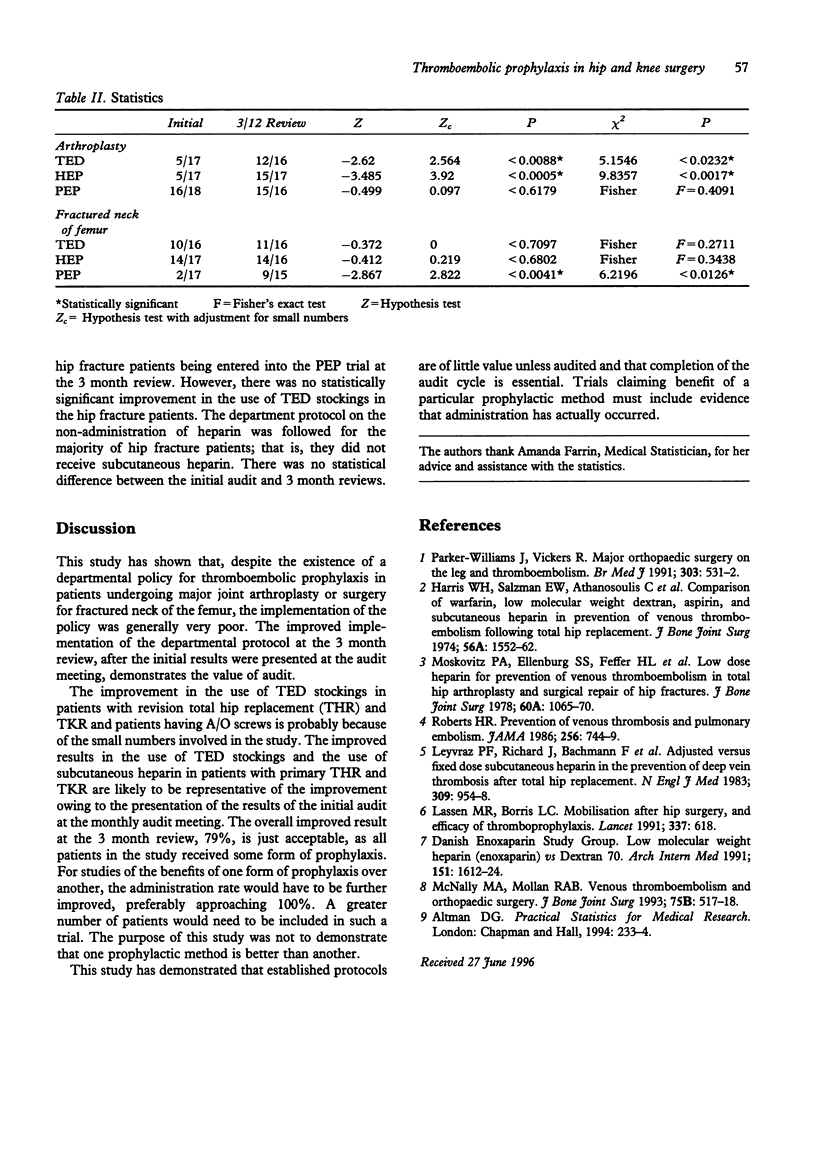Abstract
An audit of the departmental policy for thromboembolic prophylaxis was undertaken, examining the use of TED stockings, administration of subcutaneous low-dose heparin and inclusion into a multicentre pulmonary embolism prevention (PEP) trial for fractured neck of the femur. The results showed that despite an established unit policy, only 43% of patients undergoing primary hip replacement and 14% undergoing revision replacement received subcutaneous heparin. All patients undergoing primary and revision total knee replacement received subcutaneous heparin, but 75% of these patients received an incorrect dose. Use of TED stockings in patients who had sustained a fractured neck of the femur, ranged from 0% to 70% depending on the type of fixation. Use of subcutaneous heparin in these patients ranged between 0% and 20% and inclusion into the PEP trial from 0% to 20%. The results of this study were presented to the clinicians working in the orthopaedic department and 3 months later the audit cycle was completed by repeating the study. It was found there was a statistically significant improvement in the administration of subcutaneous heparin and in the wearing of TED stockings in the joint arthroplasty group as well as in the inclusion of hip fracture patients into the PEP trial. This study demonstrates that established protocols are of little value unless audited and that completion of the audit cycle is essential. It does not attempt to show that one prophylactic method is better than another.
Full text
PDF


Selected References
These references are in PubMed. This may not be the complete list of references from this article.
- Harris W. H., Salzman E. W., Athanasoulis C., Waltman A. C., Baum S., DeSanctis R. W. Comparison of warfarin, low-molecular-weight dextran, aspirin, and subcutaneous heparin in prevention of venous thromboembolism following total hip replacement. J Bone Joint Surg Am. 1974 Dec;56(8):1552–1562. [PubMed] [Google Scholar]
- Lassen M. R., Borris L. C. Mobilisation after hip surgery and efficacy of thromboprophylaxis. Lancet. 1991 Mar 9;337(8741):618–618. doi: 10.1016/0140-6736(91)91686-o. [DOI] [PubMed] [Google Scholar]
- Leyvraz P. F., Richard J., Bachmann F., Van Melle G., Treyvaud J. M., Livio J. J., Candardjis G. Adjusted versus fixed-dose subcutaneous heparin in the prevention of deep-vein thrombosis after total hip replacement. N Engl J Med. 1983 Oct 20;309(16):954–958. doi: 10.1056/NEJM198310203091605. [DOI] [PubMed] [Google Scholar]
- McNally M. A., Mollan R. A. Venous thromboembolism and orthopaedic surgery. J Bone Joint Surg Br. 1993 Jul;75(4):517–519. doi: 10.1302/0301-620X.75B4.8331100. [DOI] [PubMed] [Google Scholar]
- Moskovitz P. A., Ellenberg S. S., Feffer H. L., Kenmore P. I., Neviaser R. J., Rubin B. E., Varma V. M. Low-dose heparin for prevention of venous thromboembolism in total hip arthroplasty and surgical repair of hip fractures. J Bone Joint Surg Am. 1978 Dec;60(8):1065–1070. [PubMed] [Google Scholar]
- Parker-Williams J., Vickers R. Major orthopaedic surgery on the leg and thromboembolism. BMJ. 1991 Sep 7;303(6802):531–532. doi: 10.1136/bmj.303.6802.531. [DOI] [PMC free article] [PubMed] [Google Scholar]
- Prevention of venous thrombosis and pulmonary embolism. NIH Consensus Development. JAMA. 1986 Aug 8;256(6):744–749. [PubMed] [Google Scholar]


